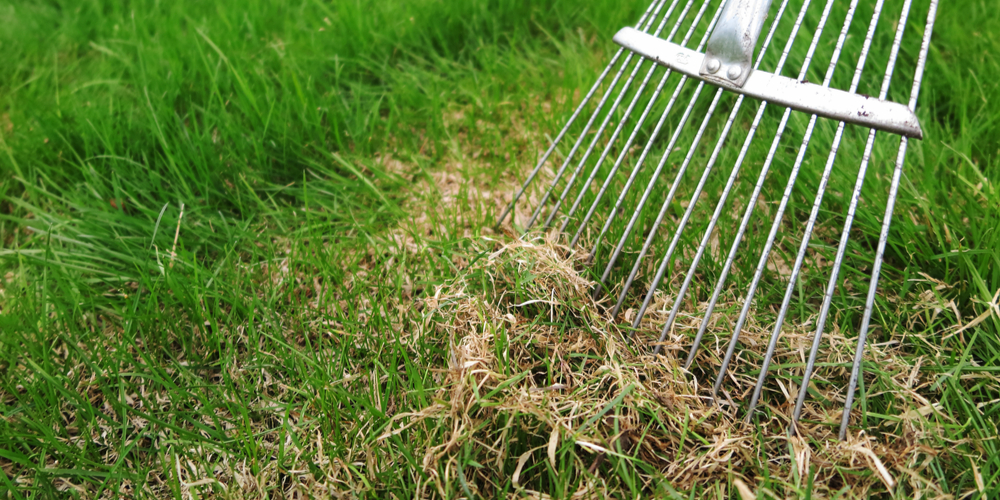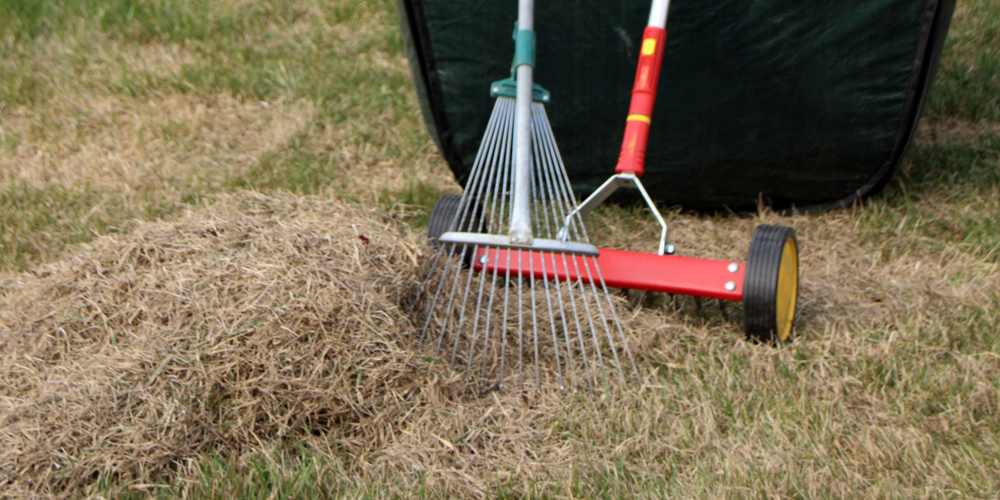Dethatching can help remove thatch, which is the build-up of dead grass and roots between healthy grass. Removing thatch can help improve air circulation, water drainage and give fertilizer direct access to the soil, all of which help your grass grow stronger and healthier. This article will look at what to do after dethatching a lawn.
What to do after dethatching a lawn
Once you’ve finished dethatching your lawn, there are additional steps you can take to ensure your grass remains healthy. Here are some tips:
Rake up excess debris
After dethatching, clumps of dead grass and roots may need to be cleared away. Rake them up and add them to your compost pile or discard them in the trash.
Aerate the Lawn
Aeration helps break up hard, compacted soil and allows oxygen and water to better penetrate the roots of your grass. It also helps nutrients reach the roots more easily. Use a garden aerator or rent one from a local home and garden store.
Alternatively, you can aerate your lawn using a garden fork or buy special aerators which can be attached to your shoes. These methods are a cheaper but more time-consuming way to aerate a lawn.
Fertilize the Lawn
After aerating, you can use a balanced lawn fertilizer to help replenish nutrients in your soil. There are many options available regarding lawn fertilizers; it’s important to choose one that adds the correct balance of nutrients to your soil. Consider using an organic fertilizer that is gentle on the environment.
The main ingredients in fertilizer include nitrogen, phosphorus, and potassium. To find the right N-P-K fertilizer for your lawn, you can do a soil test to determine which nutrients your lawn requires.
Apply Pre-emergent Herbicides
If weeds are a problem in your lawn, pre-emergent herbicides can help keep them under control. A pre-emergent can be applied in the early spring before the weed seeds have had a chance to germinate. Follow the instructions on the package for application and use a spreader to ensure an even distribution.
At other times of the year, you can spot-treat weeds that are already growing using a post-emergent herbicide. If you’re looking for a more organic solution, you can dig the weeds up by hand.
Water your Lawn
Regularly watering your lawn is essential for its growth and health. Water deeply but infrequently, as too much water can damage grassroots. The amount of water your lawn needs will depend on the climate where you live and the time of year. Check with your local extension office or a professional gardener to find out how much and how often you should water your lawn.
Mow Your Lawn
Keep up with regular mowing and never remove more than 1/3 of the grass blade at a time. Make sure you keep your mower blades sharp, as dull blades can tear grass instead of cutting it, causing damage to the roots. It’s best to keep your grass at a height of between 1 to 3 inches, depending on the variety.
How to dethatch a lawn?
If you’re looking to dethatch your lawn, there are a few steps you should take. First, mow the grass. Then use a dethatching rake or machine to pull up and remove the thatch layer. Make sure you discard it properly.
Conclusion
After dethatching, it’s a good idea to rake up any debris, then aerate and fertilize the lawn. Pre-emergent herbicides can also help keep weeds under control and make sure you water your lawn regularly, mowing it as needed. Taking these steps will ensure that your grass grows strong and healthy.

